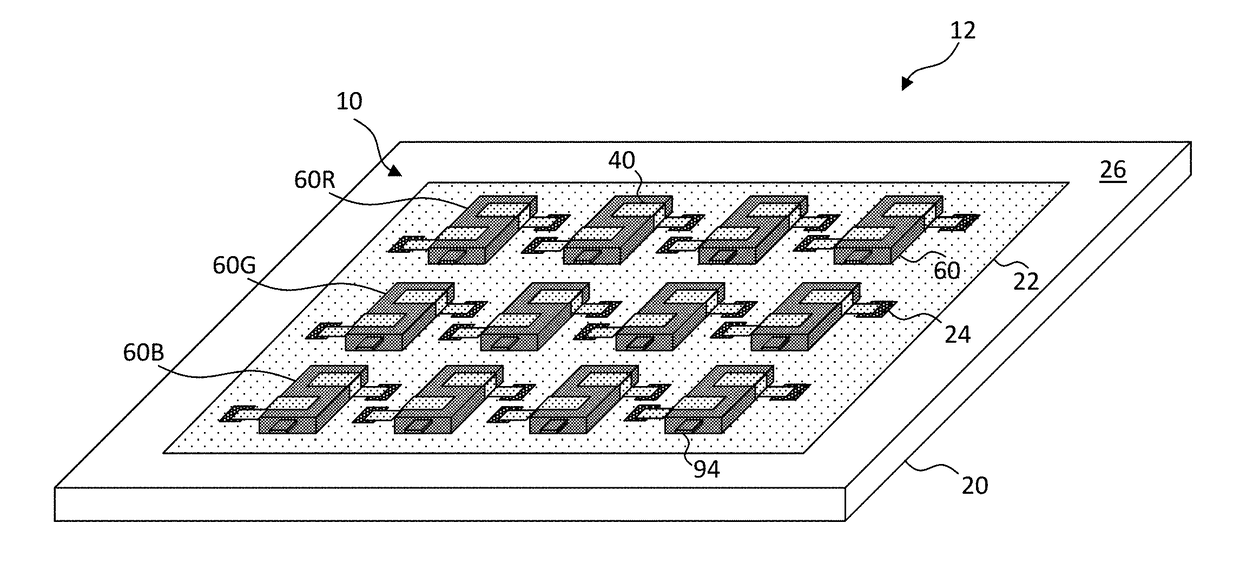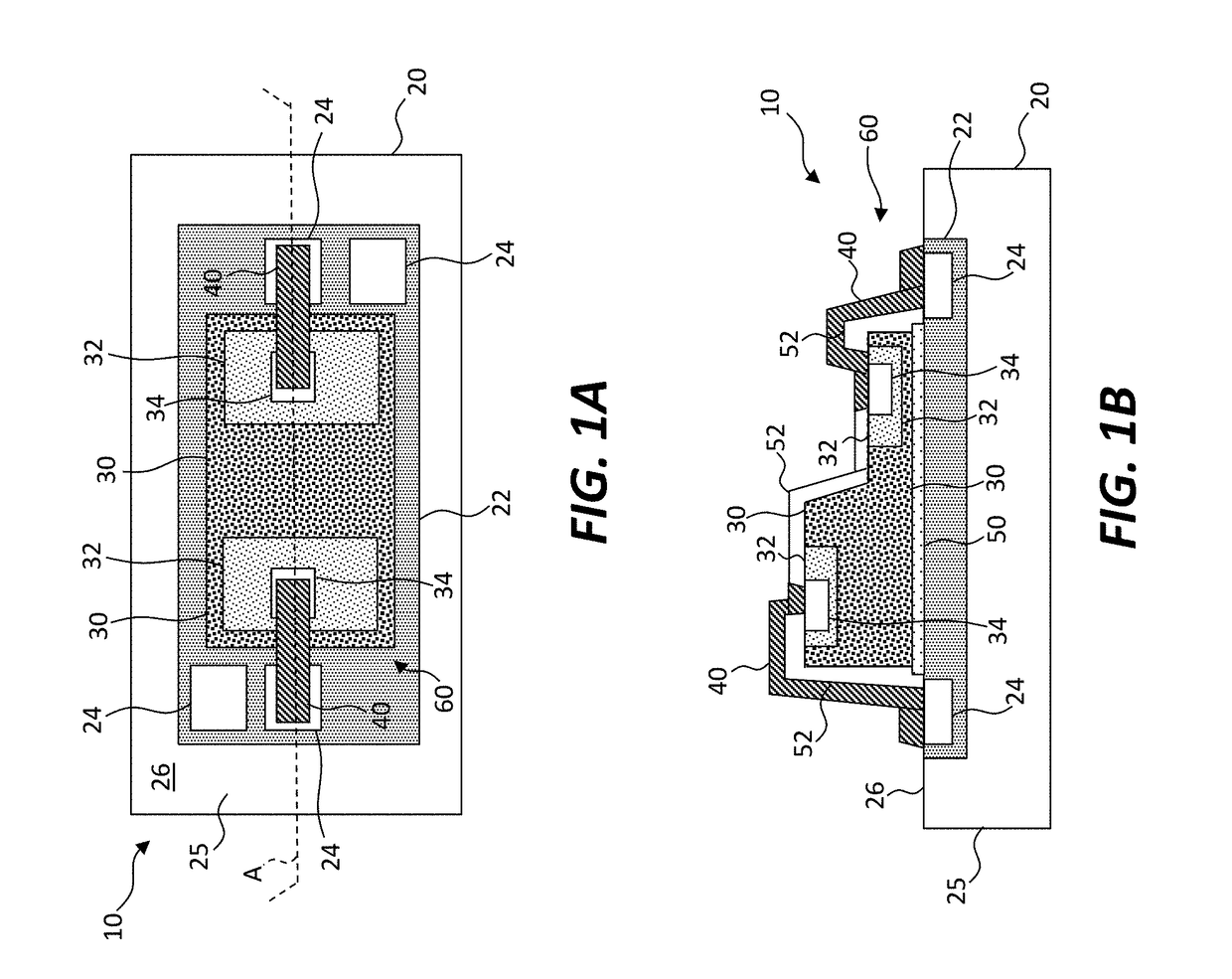Micro-transfer-printed light-emitting diode device
- Summary
- Abstract
- Description
- Claims
- Application Information
AI Technical Summary
Benefits of technology
Problems solved by technology
Method used
Image
Examples
Embodiment Construction
[0040]Referring to the schematic plan view of FIG. 1A, the schematic cross section of FIG. 1B taken across cross section line A of FIG. 1A, and the perspective of FIG. 2, in an embodiment of the present invention, a compound LED device 10 includes a semiconductor substrate 20. The semiconductor substrate 20 can be a silicon substrate. The semiconductor substrate 20 includes an active electronic circuit 22, for example a CMOS transistor circuit, formed in or on the semiconductor substrate 20, for example, using photolithographic methods and materials found in the integrated circuit industry. The active electronic circuit 22 can be, for example, an active-matrix circuit for driving one or more LEDs 60 in a display. The semiconductor substrate 20 or active electronic circuit 22 includes two or more electrically conductive circuit connection pads 24, formed in or on the semiconductor substrate 20, for providing control, power, or ground signals to the active electronic circuit 22 or rec...
PUM
 Login to View More
Login to View More Abstract
Description
Claims
Application Information
 Login to View More
Login to View More - R&D
- Intellectual Property
- Life Sciences
- Materials
- Tech Scout
- Unparalleled Data Quality
- Higher Quality Content
- 60% Fewer Hallucinations
Browse by: Latest US Patents, China's latest patents, Technical Efficacy Thesaurus, Application Domain, Technology Topic, Popular Technical Reports.
© 2025 PatSnap. All rights reserved.Legal|Privacy policy|Modern Slavery Act Transparency Statement|Sitemap|About US| Contact US: help@patsnap.com



